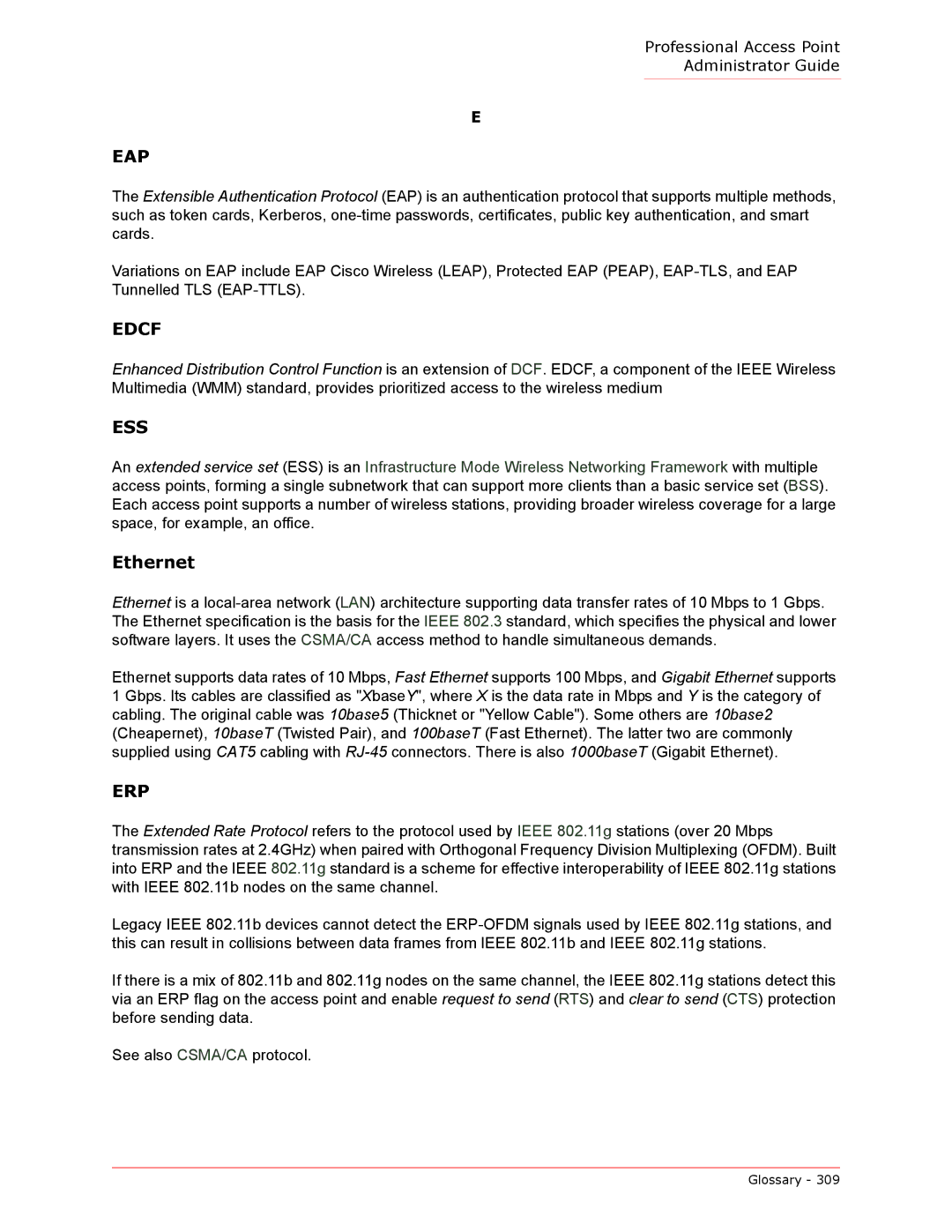
Professional Access Point
Administrator Guide
E
EAP
The Extensible Authentication Protocol (EAP) is an authentication protocol that supports multiple methods, such as token cards, Kerberos,
Variations on EAP include EAP Cisco Wireless (LEAP), Protected EAP (PEAP),
EDCF
Enhanced Distribution Control Function is an extension of DCF. EDCF, a component of the IEEE Wireless Multimedia (WMM) standard, provides prioritized access to the wireless medium
ESS
An extended service set (ESS) is an Infrastructure Mode Wireless Networking Framework with multiple access points, forming a single subnetwork that can support more clients than a basic service set (BSS). Each access point supports a number of wireless stations, providing broader wireless coverage for a large space, for example, an office.
Ethernet
Ethernet is a
Ethernet supports data rates of 10 Mbps, Fast Ethernet supports 100 Mbps, and Gigabit Ethernet supports 1 Gbps. Its cables are classified as "XbaseY", where X is the data rate in Mbps and Y is the category of cabling. The original cable was 10base5 (Thicknet or "Yellow Cable"). Some others are 10base2 (Cheapernet), 10baseT (Twisted Pair), and 100baseT (Fast Ethernet). The latter two are commonly supplied using CAT5 cabling with
ERP
The Extended Rate Protocol refers to the protocol used by IEEE 802.11g stations (over 20 Mbps transmission rates at 2.4GHz) when paired with Orthogonal Frequency Division Multiplexing (OFDM). Built into ERP and the IEEE 802.11g standard is a scheme for effective interoperability of IEEE 802.11g stations with IEEE 802.11b nodes on the same channel.
Legacy IEEE 802.11b devices cannot detect the
If there is a mix of 802.11b and 802.11g nodes on the same channel, the IEEE 802.11g stations detect this via an ERP flag on the access point and enable request to send (RTS) and clear to send (CTS) protection before sending data.
See also CSMA/CA protocol.
Glossary - 309
